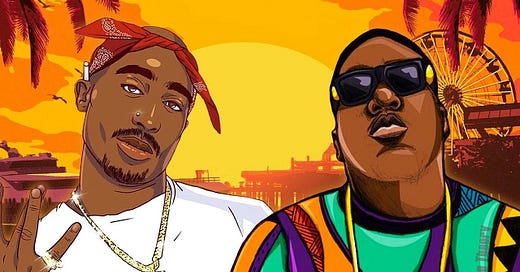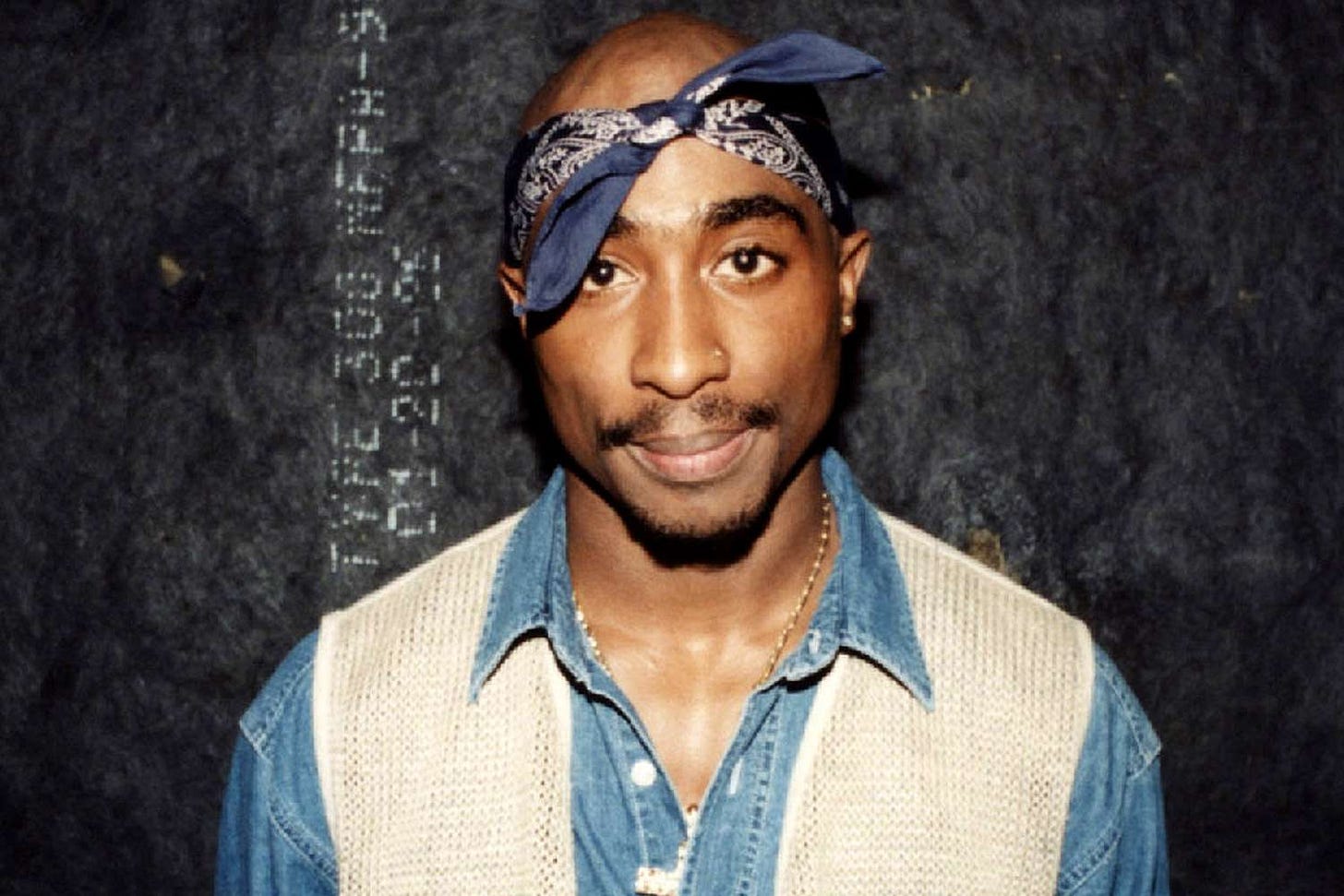Tupac and Biggie: The Making of Hip-Hop's Greatest Rivalry | Part 1
From the Streets to the Stage: The Early Years of Two Legends
The Birth of Legends in a Divided World
Before the bullets flew, before the names Tupac Shakur and The Notorious B.I.G. became synonymous with one of the most infamous feuds in pop culture history, there were two young men—shaped by their environments, but destined to rise above them in ways few could have anticipated. Their music, while iconic, was only part of their story. The seeds of their rivalry were sown in a world defined by inequality, violence, and resistance—a world that shaped Tupac and Biggie in very different ways.
Tupac: The Revolutionary and the Outlaw
Tupac Amaru Shakur was born into a legacy of rebellion. His mother, Afeni Shakur, was a Black Panther, an unapologetic activist who fought for civil rights and social justice during the turbulent 1960s and 1970s. Raised in a politically charged environment, Tupac inherited more than just his mother’s name—he inherited a fierce sense of purpose. While other young men in his neighborhood were concerned with making money or surviving the streets, Tupac was already asking questions about the system, the government, and why his people were suffering.
Afeni’s influence was undeniable. Her involvement with the Black Panther Party—especially during her battle with the state and her time in prison—pushed Tupac to view the world through a lens of social justice, resistance, and deep distrust of authority. By the time Tupac hit the hip-hop scene, he wasn’t just a rapper—he was a revolutionary figure. His early music, from 2Pacalypse Now to Me Against the World, tackled systemic racism, police brutality, and the harsh realities of life in the projects. His bold lyrics and raw honesty turned him into a voice for the voiceless, but it also made him a target for those who preferred silence over revolution.
But Tupac wasn’t just a political figure. He was a man of contradictions: vulnerable yet defiant, introspective yet brash. He walked a fine line between being the poster child for inner-city struggle and being the voice of empowerment for an entire generation. His passion made him loved, but it also made him dangerous in the eyes of those who were afraid of the change he represented.
Biggie: From the Streets to the Studio
Meanwhile, across the country, in the gritty neighborhoods of Brooklyn, Christopher Wallace—better known as The Notorious B.I.G.—was crafting his own narrative. Biggie’s story was one of survival, but without the political edge that Tupac carried. Born in 1972 to a hardworking mother who did her best to raise him in a neighborhood marked by drugs and violence, Biggie’s early years were less about activism and more about the hustle of the streets.
Biggie’s entry into the rap game wasn’t marked by revolutionary messages or political statements; it was about telling the story of the streets—the fast money, the danger, the risk, and the rewards. His smooth flow and ability to craft vivid narratives about his life and the lives of others made him an instant hit. Ready to Die, his debut album, was a reflection of Biggie’s own complicated relationship with the world around him. The album was filled with gritty depictions of his upbringing, but there was an undercurrent of success, a promise that even in the chaos of the streets, there was an escape—one that many would choose to follow.
Biggie was the antithesis of Tupac in many ways. While Tupac’s activism was direct and confrontational, Biggie’s storytelling was more subtle, yet equally impactful. His success wasn’t just about the music—it was about representing a lifestyle that people could aspire to, even if it was fraught with peril. And unlike Tupac, Biggie was aligned with the more commercial side of hip-hop, making connections with the East Coast’s iconic Bad Boy Records, led by Sean “Puffy” Combs, and positioning himself as the counterpoint to the West Coast’s Death Row Records.
Two Worlds Collide
These two men, seemingly from different worlds, would eventually come to represent the East Coast-West Coast divide that would not only shape their careers but ultimately cost them their lives. While Tupac was pushing for social change through his music, Biggie was becoming the face of commercial success and luxury. However, despite their differing approaches, they were both products of the same broken system—the system of racial inequality, systemic oppression, and a deeply divided America.
Tupac’s rise, though heavily influenced by his background, was also a product of the times. The 1990s were a period of racial tension, economic struggle, and increasing disenfranchisement of Black communities. Hip-hop was becoming the voice of those left behind, and Tupac’s activism made him a champion in the eyes of many who saw him as their voice. Biggie, though equally aware of these struggles, took a different route, celebrating the success that came from surviving the streets.
The connection between Tupac and Biggie wasn’t just about music—it was about two different visions of life in America, two different responses to the same struggles. And, as their paths would cross, the inevitable friction between the East Coast and West Coast would explode into a rivalry that would consume both of their lives. The stakes were high, and the forces working behind the scenes were far more complex than anyone realized.
What happens when these two forces collide? When two artists from opposite coasts come to embody everything their regions stand for? In Part 2, we'll witness how a cold November night in 1994 at New York's Quad Recording Studios changed everything. Five bullets would shatter not just Tupac's body, but the fragile peace between East and West. As street politics infiltrated the music industry, what began as artistic rivalry evolved into something far more dangerous—a war where lyrics became weapons, and recording booths became battlegrounds. The stage was set for a tragedy that would claim not just two legendary artists, but the soul of a generation.
Do me a favor! I’m trying to get the chat going for my new substack…Drop a comment, what’s your favorite Tupac or Biggie Song, who do you think is the better artist, who’s music better stands the test of time, or just whether or not you liked or hated this article. Either way:
Also join the newly created chat! Don’t forget to subscribe if you don’t already! It’s FREE!!








